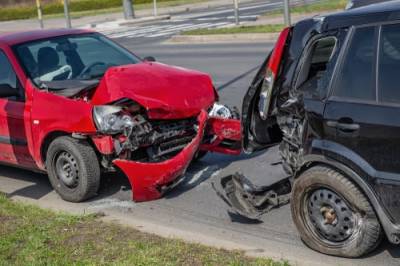When Can Rear-End Accidents Cause Serious Injuries?
Posted on April 16, 2021 in Auto Accidents
 Of all the different types of car accidents, rear-end collisions often seem like the least serious, especially when compared to high-speed head-on collisions or T-bone accidents. In many cases, being rear-ended will result in damage to a vehicle while leaving a driver or their passengers unscathed. However, these collisions are rarely harmless, and in some cases, they can lead to serious injuries that can affect a person’s long-term health. Victims of rear-end collisions will want to get legal help from an attorney to determine how they can receive financial compensation to address their damages.
Of all the different types of car accidents, rear-end collisions often seem like the least serious, especially when compared to high-speed head-on collisions or T-bone accidents. In many cases, being rear-ended will result in damage to a vehicle while leaving a driver or their passengers unscathed. However, these collisions are rarely harmless, and in some cases, they can lead to serious injuries that can affect a person’s long-term health. Victims of rear-end collisions will want to get legal help from an attorney to determine how they can receive financial compensation to address their damages.
Potential Injuries in Rear-End Collisions
When a car or truck is struck from the rear, people inside the vehicle can suffer a strong jolt, and this can result in injuries such as:
- Whiplash - A person’s head may snap back and forth suddenly due to the impact of another vehicle. This can cause damage to the vertebrae in the neck, and the neck’s muscles, ligaments, and tendons may also be injured. In more minor cases, this may cause a person to experience stiffness in the neck and loss of range of motion, but more serious whiplash injuries can lead to symptoms such as dizziness, blurred vision, headaches, or tingling or numbness in the arms, hands, or other extremities. These symptoms can persist for months or years after the initial injury occurred.
- Traumatic brain injuries - If a collision causes a driver or passenger to strike their head on a headrest, the dashboard, or other objects in the vehicle, this can result in brain trauma. In mild cases, a person may experience headaches, temporary memory loss, confusion, or issues with balance and coordination. In moderate or severe cases, a person may experience permanent memory loss, speech disorders, personality changes, mood disorders, sensory issues, sleep disorders, or seizures. In many cases, symptoms of a brain injury may not appear until days or weeks after an accident.
- Broken bones - A driver may suffer fractures in their arms if a collision took place while they had their hands on the steering wheel, or a vehicle’s occupants may suffer other types of fractures due to the impact. Depending on the location and severity of the fracture, a person may suffer temporary or permanent loss of function in the parts of their body that were affected.
- Sprains or dislocations - The forces applied to a person’s body in a collision may cause unnatural motion of their limbs, which may lead to dislocated or sprained joints. In addition to receiving emergency medical treatment, a person may require ongoing treatment and physical therapy before they can regain full function in the parts of the body that were injured.
Contact Our Kane County Rear-End Accident Attorneys
Usually, rear-end collisions are caused by the negligence of the driver who struck another vehicle from behind. A driver may be at fault if they were speeding, tailgating, talking on a cell phone, or acting in other ways that put you at risk of injury. At Kinnally Flaherty Krentz Loran Hodge & Masur P.C., we can help you demonstrate fault for a rear-end accident, and we will work to make sure you receive the financial compensation you need and deserve. Contact our Aurora rear-end collision lawyers at 630-907-0909 to arrange your free consultation.
Sources:
https://rushchiropractic.com/what-happens-to-your-body-in-a-rear-end-collision/
https://www.mayoclinic.org/diseases-conditions/whiplash/symptoms-causes/syc-20378921

 Of all the different types of car accidents, rear-end collisions often seem like the least serious, especially when compared to high-speed head-on collisions or T-bone accidents. In many cases, being rear-ended will result in damage to a vehicle while leaving a driver or their passengers unscathed. However, these collisions are rarely harmless, and in some cases, they can lead to serious injuries that can affect a person’s long-term health. Victims of rear-end collisions will want to get legal help from an attorney to determine how they can receive financial compensation to address their damages.
Of all the different types of car accidents, rear-end collisions often seem like the least serious, especially when compared to high-speed head-on collisions or T-bone accidents. In many cases, being rear-ended will result in damage to a vehicle while leaving a driver or their passengers unscathed. However, these collisions are rarely harmless, and in some cases, they can lead to serious injuries that can affect a person’s long-term health. Victims of rear-end collisions will want to get legal help from an attorney to determine how they can receive financial compensation to address their damages.